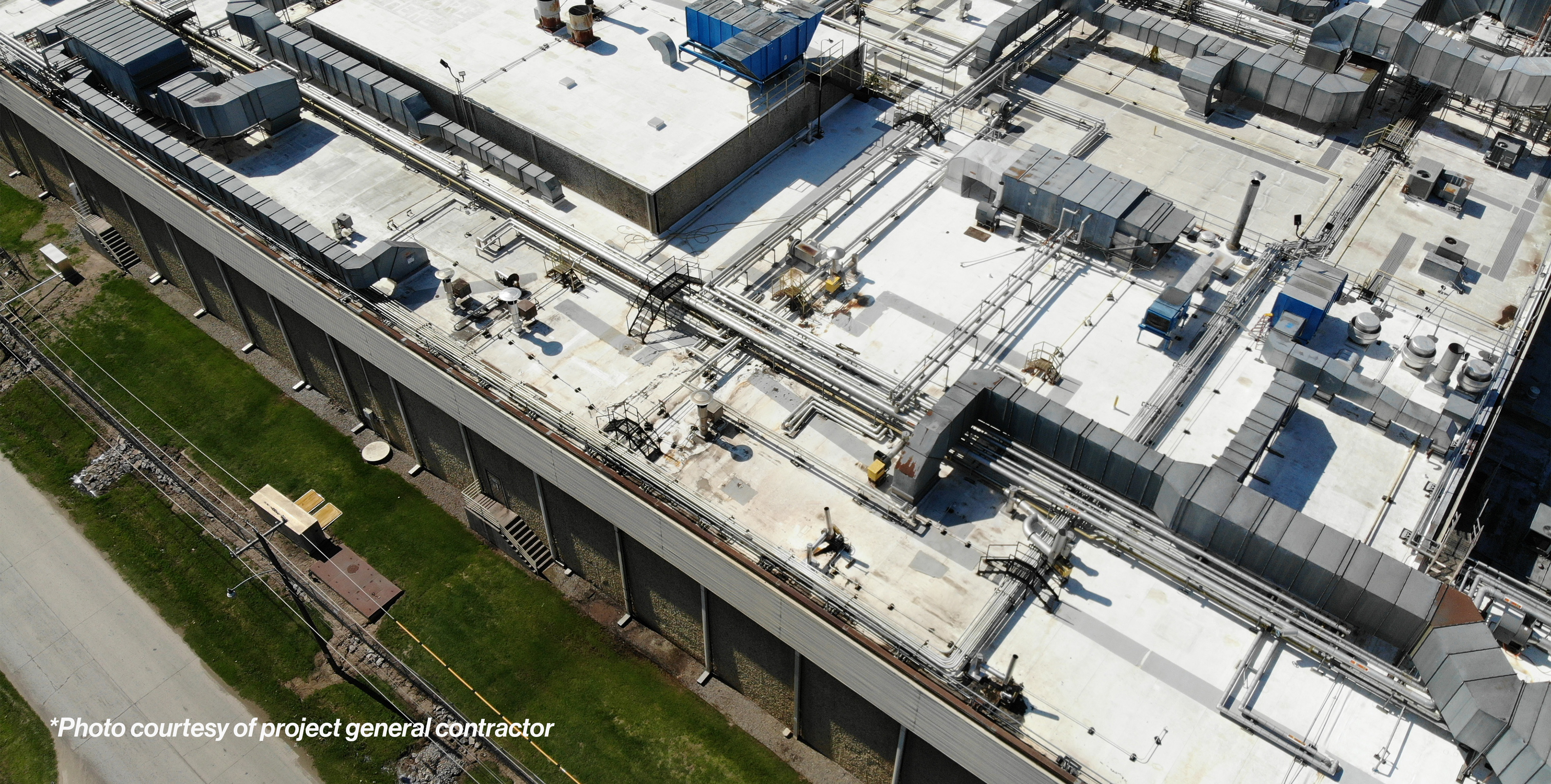The world of retail has been in a constant state of evolution for centuries. As trends change and innovations burst onto the scene, retailers know they must evolve or be left behind by their competition. The last decade has been no different. While the COVID-19 pandemic left massive and far-reaching ripples of change, many of which we still feel today, there are other reasons retailers are shifting to an omnichannel approach.

While customers are beginning to pour back into brick-and-mortar stores, these same customers are still a significant presence on the e-commerce side of retail. Many traditional retailers may fear that such convenient means of shopping might discourage customers from physically shopping their aisles, but that isn't the case. The beauty of the omnichannel approach to retail is that it's not simply one-dimensional but instead seeks to provide customers with a seamless shopping experience no matter how they shop, whether that be online, via pickup, in-store, et cetera. With the rise in online shopping, the desire for same-day delivery, and more, some retailers are adding to existing storefronts to accommodate even more space for these centers and the robotics they often require. Major retailers like Walmart, Target, American Eagle Outfitters, and more are putting their money where their mouth is and reevaluating how they do business, online and in-person.
A Closer Look at Micro-Fulfillment Centers
Micro-fulfillment centers, or MFCs, are one answer to consumers' cries for faster fulfillment of their favorite products. Whether it’s groceries or shelf-stable items that they want in the blink of an eye, MFCs are filling that gap and competing with larger online retailers’ promises of two-day (or less!) shipping times.

An MFC is often located in existing space within a retailer’s store layout and comprises anywhere from 5,000-35,000 square feet of retail space. In general, when adding a micro-fulfillment center to a store's existing footprint, often referred to as a “customer center,” many retailers see positive sales trends due to optimizing shelf space, increasing SKUs, and performing with the speed and convenience the MFC model affords.
For smaller retailers who may be watching the progress made by large-scale retailers before diving in themselves, the overhead costs necessary to become a key player in the MFC space can be prohibitive, at least for now. However, as the necessary technology continues to evolve, these robotics will only become smaller, more capable, and easier to incorporate for all, thanks to the early adopters within the retail industry. For many small retailers, their way into the MFC space is by taking a "wait and see approach" while still making a concerted effort to expand their pickup areas to keep up with the competition at their own pace.
However, automation is not an end all be all in the MFC space. Large retailers are testing both fully automated and “manually automated” MFCs. This allows them a dedicated warehouse space for the fulfilment of orders, but instead of robotics to run them, they take a more traditional approach to staffing by utilizing store employees.

E-commerce giants like Amazon, GoPuff, and Instacart have quickly adopted the MFC model and continue optimizing how it best works for them and their customers. In some cases, especially in larger, more urban cities, these e-commerce companies boast delivery times of as little as 30 minutes.
Why it Works
In March 2022, the research firm Interact Analysis forecasted that more than 7,000 fully automated MFCs would be installed globally by 2030—with most of those located throughout North and South America. These centers focus on an expedited fulfillment model—same-day delivery—because of the proximity to their customers' homes. Speed is one of the biggest reasons we're seeing so much momentum with MFCs within the retail industry, but it certainly isn't the only one. Check out a few of the advantages retailers (and their customers) are realizing thanks to the rise in MFCs in the U.S.
Speed
One of the main reasons that MFCs have risen in popularity so quickly is because of the strategy behind them. Major retailers, like Walmart, seek to add small fulfillment centers in many of their stores to leverage proximity to their customers. Thus, they can guarantee an increase in the speed of fulfillment of orders, even potentially beating out major e-commerce competition not only because of shipping speed but, in many cases, price.
Convenience
Customers want what they want, and they want it now. That "right now" mindset hasn't changed and likely won't, thanks to all the innovation and convenience-centered aspects gaining traction in the retail industry. So, retailers have no choice but to try to have the proper selection at the right price, ready to deliver to their customers ASAP.
Lower Shipping Costs
Typically, when comparing the costs of fulfilling an order from a major regional distribution center, or D.C., and a local micro-fulfillment center, shipping costs are drastically reduced thanks to MFCs. Due in large part to the proximity to customers, this “last mile delivery” process allows retailers to not only fulfill orders faster, but it tends to incur less shipping costs, as well—a win-win for the customer.
Another way retailers are cutting down on shipping costs while also trying to find more sustainable, environmentally friendly ways to deliver products? Technology like electric, driver-less vehicles and drones are two exciting ways retailers redefine fast, efficient delivery.
Lower Labor Costs
As labor costs continue to increase, moving to a fully automated model can be the right call, especially for large-scale retailers that see a healthy amount of online and pickup orders. The retail industry continues to recover from the effects of COVID-19 on employee retention and turnover, and more and more retailers are seeing the benefits of automating some aspects of day-to-day business, which can help mitigate these effects. According to the latest LogisticsIQ 2022 market report, labor costs take up an average of 40-60% of a warehouse’s total operational expenses. Therefore, by leveraging systems capable of increasing productivity and efficiency in the fulfillment spaces within a store, retailers can then free up their workers to perform higher level operations elsewhere. This fact alone can single-handedly drive up the level of automation investment that retailers plan to make.

Challenges to the MFC Model
As with anything, there are always challenges to innovation within the retail environment, and MFCs are no different. Mostly, these challenges look like supply chain issues and square footage limitations. They also encompass things like the considerable costs incurred to service the robotics sometimes involved with larger MFCs and, finally, ensuring that the retailer is achieving a robust ROI on the expenditure of an MFC itself.
Space
These micro-fulfillment centers often require square footage from the current sales floor or dedicated space added on to an existing building, if the store’s city ordinances and space planning allow it. Thus, requiring retailers to make even more efficient use of shelf space, so when deciding to move forward, they must also pinpoint healthy stores that will perform well under the MFC model. For now, we are seeing those same large retail giants double down on robotics and other logistics within their MFCs to see if adding automation can make their fulfillment operations even more successful and allow them to serve more customers faster. A bonus? Taking those employees that would typically be tasked as "pickers" within the MFCs and putting them back in the stores in a customer service capacity.
Upfront Investments
Retailers are beginning to double down on innovation and automation made possible by the robotics industry. From fully automated fulfillment centers to more minor operations incorporating smaller-scale technology, retailers are beginning to reevaluate what aspect of their business they need help with and how adopting a micro-fulfillment center can help. Adopting a fully or partially automated system can be a large upfront investment, but the typical payback period is thought to net out in 24 months or less, depending on the individual store’s sales numbers. Many stores realize that deploying these MFCs is essential to stay competitive, no matter what the upfront investment amounts to. MFCs have been known to cut down “picking” time from 60 minutes to just six.
Resistance to Change
Gone are the days that retailers must rely solely on conveyor belts to move products from one location to another. With advanced robotics and Artificial Intelligence readily available to those willing to give it a try, times are certainly changing. If you’ve been in a grocery store recently, you’ve likely seen store associates walking the aisles outfitted with large tubs that they’re meticulously packing for an online grocery pickup order. The thought behind the MFC model is that this can be done in a dedicated warehouse-like space at the back of the store by robotic technology. The beauty of using robots and other technology to fulfill orders is the fact that robots are not bound by the same laws of physics that humans are, thus they can pack orders more efficiently and quickly, cutting down on the time and energy needed to complete them. This not only frees up human associates to be on the floor serving customers, but it also allows the store to fulfil more orders than they traditionally could.

Final Food for Thought
For many retailers, the story shouldn't end with the opening of an MFC. In fact, that should be the beginning of redefining how their customer experiences the store. Could this mean that stores could one day do away with checkout lanes and instead leverage smart cart technology? What seems like something out of a sci-fi movie in the 90s could very well become a reality in a few short years if we continue to investigate and adopt the technology available to us.
As grocery, e-commerce, and third-party retailers lead the way into the future via technological innovations, we're encouraged to sit up and take notes. What's working? What isn't? With the explosion of social media and the resulting word-of-mouth marketing that comes with it, retailers can showcase their dedication to their customer base by continuing to innovate and evolve, always keeping in mind what results in the best customer experience. MFCs are complex facilities and retailers will need to lean on trusted A+E partners and robotics providers to reinvent themselves in this ever-evolving market. At HFA, we're excited to see what's next for MFCs and can't wait to continue to partner with our clients to help them claim a spot within this exciting niche within the retail industry.
Special thanks to Kevin Hayre, HFA Team Lead/Designer, for the thought leadership and expertise he provided throughout this article.
Want to know more? For more about our work in the robotics industry and designing MFCs, please reach out to Ed Damphousse, Client Partnerships Lead (ed.damphousse@hfa-ae.com).


.png)
.jpg)



.png)
.jpg)




